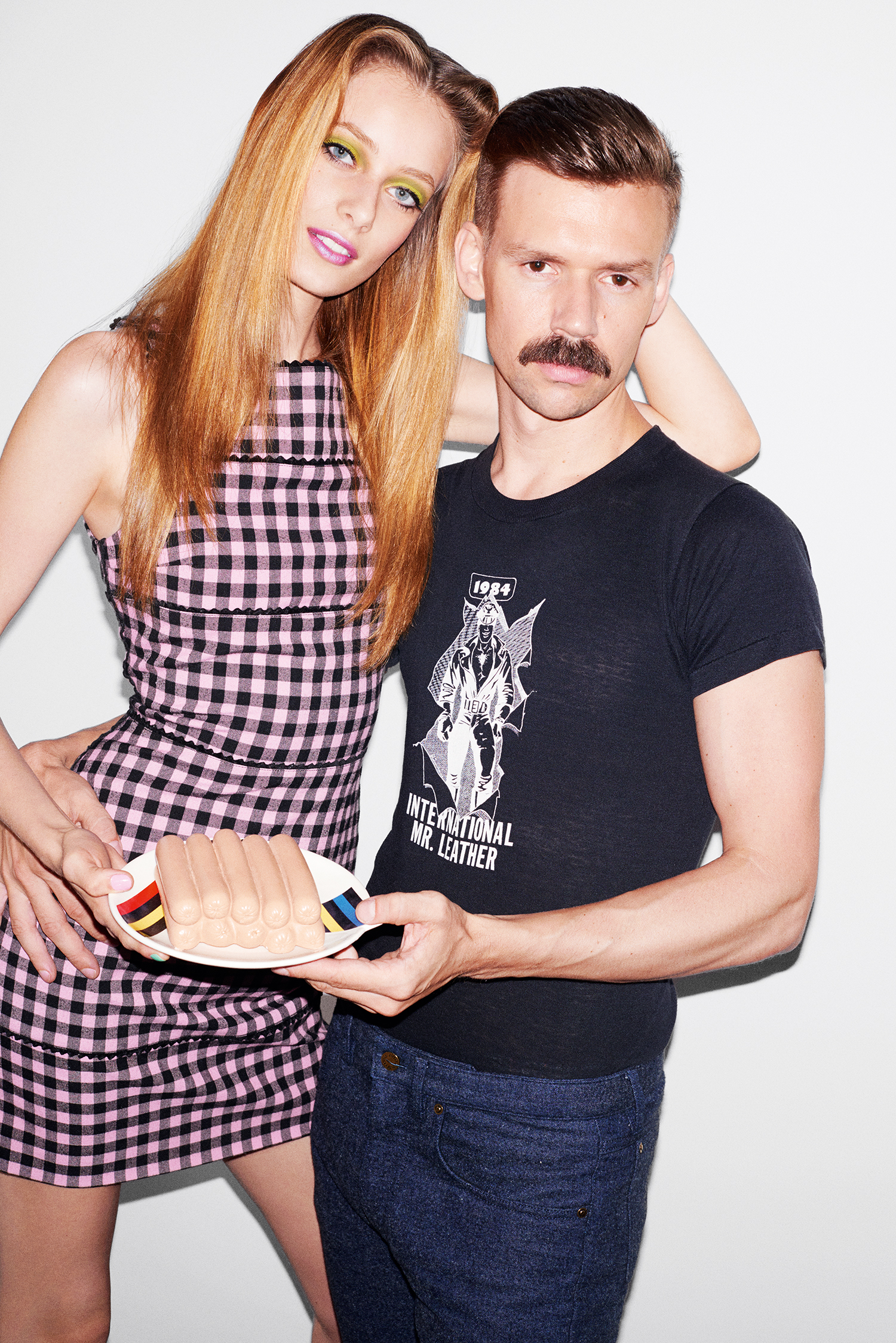Purple Magazine
— F/W 2015 issue 24
Adam Selman
 Adam wears needlepunched cotton jeans LOUIS VUITTON. Thairine wears a bubblegum gingham paneled mini dress ADAM SELMAN
Adam wears needlepunched cotton jeans LOUIS VUITTON. Thairine wears a bubblegum gingham paneled mini dress ADAM SELMAN
photography by KATJA RAHLWES
style by MEL OTTENBERG
interview by CAROLINE GAIMARI
Raised in a religious family in Texas, Adam Selman had a lot of catching up to do when he moved to New York with a fashion dream. Well-known for his stage costumes for Rihanna, his eponymous collection is the perfect fit for the downtown New York scene — his clothes are colorful, crafts-y, and playfully ironic.
CAROLINE GAIMARI — Where did you grow up?
ADAM SELMAN — We moved around a lot when I was a kid. Illinois, North Carolina, Virginia. We eventually landed in a place called Belton, outside of Waco, Texas. In high school, I was a cheerleader. I did theater, and I was super nerdy. A real go-getter! Anything I could…
-

Adam wears a gray wool coat boss over a midnight blue wool and silk jersey sweater LANVIN with black wool pants GARCIAVELEZ Thairine and Emmy wear knit baby tees and long skirts ADAM SELMAN
-

White cotton t-shirt A.P.C. tucked into checked wool pants and leather belt ERMENEGILDO ZEGNA COUTURE
-

Navy cashmere formal coat BRIONI over Adam’s own vintage t-shirt and cotton reworked vintage jeans VETEMENTS
-
